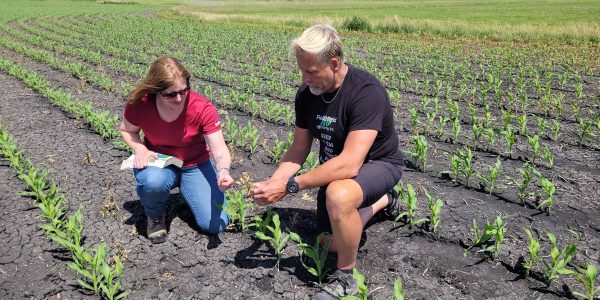Rain during the crop’s weed control season makes it difficult to give corn the critical weed-free period it needs to maintain maximum yield – a long period.
This year in southern Manitoba (and many other areas) the difference between fields that were pre-emergence sprayed and those that were not has been quite noticeable, as regular rains have activated the pre-emergence residues that were applied while preventing crop applications from being made in a timely manner.
As part of this Corn School In this episode, Jason Voogt from Field 2 Field Agronomy and Jeanette Gaultier from BASF take us to a field near Starbuck, Manitoba, where rain forced applicators to leave the field, creating a revealing comparison on the same field.
“The high humidity allowed these pre-emerge products to work very effectively, so this was a great opportunity to talk about the importance of pre-emerge,” Voogt points out. “Here we have a side-by-side comparison of treated and untreated on the exact same field, and the difference is really dramatic.”
Corn is an ideal crop to replace active ingredients that are currently relied on in other crops, Gaultier said.
“For example, if you’re using Group 2 in many other parts of your rotation, you can easily switch it over to another unique mode of action, like Group 27, which may not have the residual effect but has a good weed spectrum,” she points out. “It’s a unique mode of action and you can tank mix it back with something that has the residual effect if that’s your goal.”
In this new Corn School episode, Voogt and Gaultier discuss the value of preemergence herbicides in providing critical weed-free periods in corn, in-season flexibility and improved herbicide resistance management.
Take a look at the Corn School Library here.
subscribe: Apple Podcasts | Spotify | | All Podcasts







